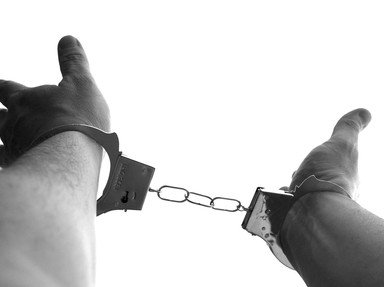Quiz Answer Key and Fun Facts
1. Let's start with the big one - the Crown Jewels. This Irish-born military man tried to steal the royal regalia from the Tower of London in 1671, but failed. What was his name?
2. Continuing with the Crown Jewels, they weren't always kept in the Tower. Indeed, they were once stolen from the very place traditionally used for the Coronation. Which great church was it?
3. Still in London, there was the Great Gold Robbery of 1855. This was a clever operation in which lead shot was substituted for gold bullion on the train between London and Boulogne. Which railway station, south of the River Thames and very close to it, did the train leave from?
4. It's not always jewels or bullion. In 1839 a clerk at a shipping company found out that gold dust was on its way from Brazil to London. It was intercepted and sold on to a dealer who turned it into bullion. What Cornish port, sited on the estuary of the River Fal, was the scene of the theft?
5. Not all gold robberies are quaint events set in the distant past. In 1983 £25 million worth of gold bars were stolen from a warehouse at Heathrow Airport, London. Which company did the warehouse belong to?
6. It's not just Britain where robbers go for the gold! In August 2005 a group of robbers in this Portuguese-speaking South American country tunnelled into a bank and made off with over 164 million Reals. Which country was that?
7. Then there was the 'official' gold heist. In 1861, Union soldiers helped themselves to $27,000 in gold from a bank in Weston, Virginia, and took it to Wheeling, where it helped fund an organisation of people who did not want to secede from the Union. In the end, though, they created their own breakaway state. Which was it?
8. You'd have thought they'd have worked out not to send gold by rail, wouldn't you? But no. In 1935 a train travelling between Alice Springs and Quorn was robbed of thirty-five pounds of gold on the famous Ghan railway. Head Office in Melbourne were not happy. What country did this happen in?
9. Back in the days of the American Old West, soldiers were paid in gold, and the payroll was a constant target. The Paymaster with his escort was on his way from Fort Grant to Fort Thomas, Arizona Territory, when they were ambushed. There was an extensive gunfight before the attackers made off with the gold. In those days the fort they were headed for was named for a local tribe. What was its original name?
10. And finally, a famous fictional robbery, most of which was filmed in Italy. One of the stars, Michael Caine, is still known for his line, "You were only supposed to blow the bloody doors off!", while the absolutely literally cliffhanger ending may have contributed to the film's selection as one of the best British films of the 60s. What was it called?
Source: Author
GillianO
This quiz was reviewed by FunTrivia editor
bloomsby before going online.
Any errors found in FunTrivia content are routinely corrected through our feedback system.

